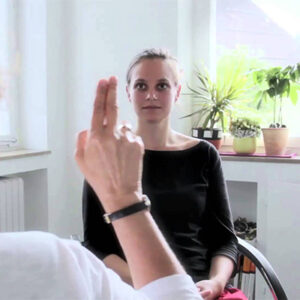
Lucie Howell (pictured) is one of the counsellors at Cranleigh and here she explains how the counsellors help children and the importance of supporting children who have been affected by trauma.
Talking to someone when you have an emotional or behavioural problem is luckily now an accepted part of modern life. You could see it as a coping strategy, ‘talking your way through the storm’. When difficult things happen and we feel overwhelmed, some of the heightened emotions we experience don’t get fully processed. The experience can get stored away with lots of fear and anxiety. Counselling can help, not by re-writing the memory, but by processing the emotional response.
How does trauma affect learning?
Patients with post-traumatic stress disorder show increased activation of the amygdala when presented with potential fear stimuli. The amygdala is the brain’s emotional memory centre (also known as our ‘smoke detector’) located within the limbic system: the ‘emotional brain’. The amygdala also has a role in motivation and memory, so de-sensitising traumatic memories can aid motivation and learning.
New developments in counselling
 EMDR (Eye Movement Desensitisation and Reprocessing) is a relatively new therapy originally developed to help people deal with the effects of traumatic experiences. It has proven to be extremely effective in both children and adults who have experienced trauma. We have trained counsellors who use this therapy at Cranleigh for children we assess as likely to benefit.
EMDR (Eye Movement Desensitisation and Reprocessing) is a relatively new therapy originally developed to help people deal with the effects of traumatic experiences. It has proven to be extremely effective in both children and adults who have experienced trauma. We have trained counsellors who use this therapy at Cranleigh for children we assess as likely to benefit.
Who is EMDR for?
EMDR is for people who have symptoms of post-traumatic stress disorder (PTSD) or trauma in the context of other presentations. This is when something which took place in the past gets replayed as if it were still happening in the present. This may manifest itself in a variety of ways: through flashbacks, nightmares, unwanted thoughts, negative beliefs, images and sensations. The result can make you feel anxious and constantly on guard, and may lead you to avoid situations which trigger these memories.
Traumatic events which are overwhelming are not stored like other memories – they remain active and intrusive. The bilateral stimulation used in EMDR involves a dual focus of attention, requiring you to focus on something happening in the present (for example, following the therapist’s fingers) while thinking about the event in the past. Eye movements, similar to those during REM sleep, will be recreated simply by asking you to watch the therapist’s finger moving backwards and forwards across your visual field. Sometimes, a bar of moving lights or headphones is used instead. The idea is to enable the brain to process and store the memory correctly, shifting from the short-term memory to the long term.
 Come and find us
Come and find us
All young people want to feel like they belong to their peer group and a number one need is to feel safe for this to happen. When we experience adverse life experiences we become geared for defence/protection and this can lead to young people isolating themselves from friends and support systems. The last year’s recent lockdowns have also meant periods of enforced isolation which has only served to compound these issues.
Counselling is therefore an opportunity to create a safe space for young people to express their feelings, and develop coping skills in order to attain a fresh and hopeful perspective.
All pupils are welcome to come and meet with one of the three counsellors who work at Cranleigh School. The referral process is easy: our names and email contacts are up around the Senior School so pupils can refer themselves, or House matrons are happy to make appointments; you can also email counselling@cranleigh.org. Parents and guardians of CPS children need to contact Deputy Head (Pastoral), Emma Lewis. You can find us in the Medical Centre, Monday-Friday.
